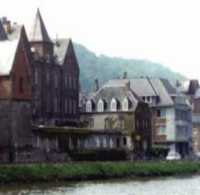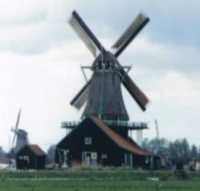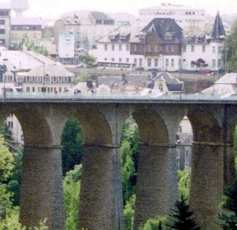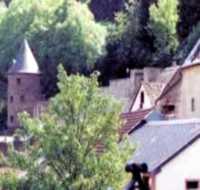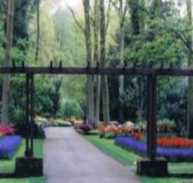Planning A Trip to Europe
Is All About Time
The trick to successfully planning a trip to Europe is choosing which places to go, which sights to see, the foods you want to eat, and the kind of encounters you hope to have while you're traveling in Europe.
The things you choose as most important to see, do, eat, and visit are the very components that will determine the success [or failure] of your Europe travel experience.
They'll influence the outcome of your trip - whether it will be fun and exciting, memorable or medi-ocre, and whether it will be exhila-rating, exhausting, or the trip of your lifetime.
It's impossible to see all of Europe in just a few weeks.
So, it's imperative to be selective when creating a travel itinerary and developing your plan for what to see and do.
Strive to create a working timeline for your trip, while balancing priorities with the mechanics of travel and the logistics of daily existence.
Above all, your travel plan for Europe should be flexible and open to change.
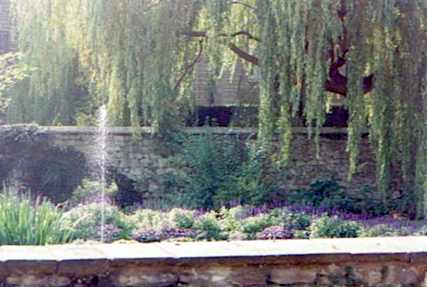
The Main Element When Planning a Trip to Europe
Time creates the fundamental structure when planning a trip to Europe:
- Time to understand where you are and get your bearings.
- Time to sightsee: visiting the museums, monuments, and attractions.
- Time to move between the cities and towns and local points of interest.
- Time to mingle with the people, getting to know their habits and culture.
- Time to unwind and enjoy: to immerse yourself in your surroundings.
- Time to step off the narrow tourist track and absorb what you see.
- Time to eat. And sleep. And make up for lost time!
Depending on the overall goal for your trip [and assuming your visit will include both major and not-so-major aspects of your destination] the first thing to do when planning your trip to Europe is focus on the cities.
No matter what method you use for your travel research, you can find compre-hensive visitor information to help you decide which sights, attractions, monu-ments, and museums are most important to see - and which ones you can set aside as 'maybe' or 'not this time'.
Europe’s cities overflow with compelling historical venues, iconic architecture, must see museums, and untold settings imperative for any visitor to see.
History and culture are everywhere. And often overwhelming.
A great way to familiarize yourself with specific city destinations is to study the general layout. Use a map to create a mental bird's eye view, forming a visual reference in your mind.
Learn the locations of major points of interest: the airport you'll arrive in, your hotel, the museums, architectural sights, and the main attractions and events.
Use your flight time to review and commit to memory city directional references, landmarks, transportation hubs, geographical points, so you have a reference of direction when you arrive.
Having a mental reference of where you are and where you're going will help you acclimate more quickly to your surroundings.
It will also help to dispel confusion or disorientation, and allow you to hit the ground running!
The Primary Focus of Planning a Trip to Europe

The main focus of planning a trip to Europe should be to allow sufficient time to immerse yourself in the culture, history, art, and people in the places you visit.
To do this, you need to educate yourself about where you're going and what you're going to see, before you get there.
You should schedule your 'up' time with plenty of 'down' time, so you can see the physical things you came to see, inter-spersed with time to understand the essence and context of where you are.
A rule of thumb: for every 3-4 hour period of intense sightseeing, take an hour to kick back, eat a bite, rest your brain, and enjoy your surroundings.
The following are examples of 'must see' venues you'll want to include in your travel plan for Europe cities, along with minimum times for exploring them:
- The Great Museums: The British Museum, The Louvre, The Prado, The Uffizi, The Rijksmuseum: 3-5 hours
- Historical Sites: The big C’s - castles, cathedrals, cemeteries, and cities [think medieval Bruges or Vatican City]: 2 hours–whole day
- Local Festivals: Queen’s Day, Keukenhof, Bastille Day, Carnivale, Oktoberfest: half–whole day
- Unique Local Events: Changing of the Guard, Edinburgh Tattoo, Christmas Markets: 2-4 hours
- Day Trips: Versailles [Paris], Toledo [Madrid], Stonehenge [London], Pompeii [Rome]: whole day
- Area Overview: Street markets, city tours, walking tours, river tours: 2 hours
- Savoring the Local Scene: As much time as possible!
Along with the actual time you need to visit a sight or attraction, you also need to allow for travel time to and from your sightseeing venues.
Local traffic; train, bus, or underground schedules; the weather; ticket and admission lines; even other tourists will impact the time you need to allow for a sight or attraction – as well as travel time to and from.
Few travelers consider the impact each of these will have on actual 'sightseeing time', especially if traveling in Europe during peak travel season.
Planning a trip to Europe during the busy travel season increases the time you need to allow for local transportation, traffic, and crowds. Tourists increase the time you need to allot for everything you do.
Failing to take them into account will disrupt your schedule and can even cause you to miss things altogether, just because you don't have enough time!
The Importance of Europe Travel Planning

When planning a trip to Europe it’s normal to try to include as many major sites in your travel schedule as possible.
But it’s actually more important to combine your historical and cultural activities with some 'kick back' time for rest and rejuvenation.
You need to give both body and brain a chance to catch up from the intense stimulation travel in Europe creates.
Fatigue can play a significant role in your daily activities. Especially when time zone differences between your home and destination begin to take their toll.
Never schedule intensive sightsee-ing for the day you arrive overseas. Or when you’re exhausted from being constantly on the go.
Allow time to regroup and recharge your strength - along with your per-spective.
Pause to enjoy a sidewalk café, a stroll through a garden, a bench in a park to watch the natives.
Or just to take a nap!
Once refreshed, you’ll be better able to see and do the things you want, without falling prey to the over-absorption and stimulation traveling in Europe creates.
You’ll more fully enjoy - and better remember - each of your travel experiences.
Planning a trip to Europe is about creating balance.
It's one part planning, one part doing, and one part making sure your Europe travel plan doesn’t blow up in your face.
And when you return home, your memories will focus on the wonderful things you did, and ate, and saw.
Not on what you wished you’d had time to do. Or what you missed!
For more tips on planning a trip to Europe, see the following articles:
Budgeting For Travel lets you know your money will last as long
as your trip.
Create a Travel Itinerary for Europe and bring your trip to life.
Does your Europe Travel Plan include everything you want to
see and do in Europe?
Use your Travel Budget to keep your travel costs under control.
Does your Travel Attitude increase the benefits of traveling?
Return to Getting Travel Ready
Travel Tip
Limit your European trip to no more than 3 weeks, unless you’re relaxing in a villa on the Mediterranean. If your trip is much longer than that, the stress and intensity of travel will start to wear on you.
Remember, life goes on at home, and you’re not there to keep it in line. The longer you’re away from your normal routine and responsibilities, the more your travel experience will begin to diminish.
Return to Homepage | Return to Top...
Updated Travel Topics
Make Your Packing Easier and your Trip More Organized...

Packing Cubes from eBags

Our Readers Say...
Thanks for providing all these awesome resources for travel addicts on your website! ~ Sally D./Canada
I enjoyed looking through your website, especially the article you've written about yourself and your passion for travel. I share the same passion. ~ Theresa C./US
This is the first time I’ve visited your site, and it's fantastic. I think it's a terrific resource as an all-travel portal. ~ Steven F./US
I’ve been reading your blog, travel-safe-travel-smart.com and found the article 'Use The Best Travel Guides To Plan Your Trip' extremely interesting. ~ Jessica B./US







